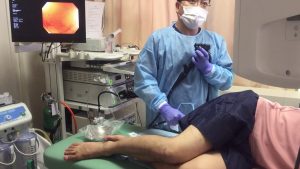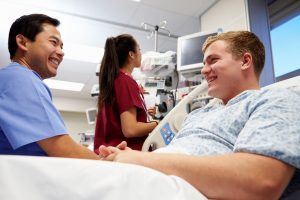
Source: menshealth.com
People dying of cancer are growing in numbers not only because they are getting worse, but because of their many fears. Because of anxiety, they delay not just the treatment but the diagnosis.
Undergoing a colonoscopy is a procedure most feared by many. The very idea that the doctor will insert a tube or an instrument in their anus makes them step back and think not just twice, but longer.
Don’t Fear The Unknown, Seek Knowledge About It
The colonoscopy procedure is an exam of the large intestine and distal part of the small intestine using a scope with a fiberoptic camera on a flexible tube passed through the anus. The camera allows the physician to visualize if the patient has inflamed and irritated tissue, polyps, ulcers, and cancer. They can even do the appropriate procedure when they see what’s causing the problem.
Preparation For Colonoscopy
If you are to undergo colonoscopy, the doctor will ask you to have a change in your diet for a few days. You must not forget to tell your doctor if you have any health problems or if you are on any prescribed or over-the-counter medications, food supplements, or vitamins.
A bowel preparation instruction which will be given by your doctor must be followed so that there will be little or no stool in your bowel before the procedure.
It is important to have a good quality bowel prep because this will give the doctor a clear view of your colon with no stool blocking the way.
Does Colonoscopy Hurt?
For some, colonoscopy isn’t painful, but others feel some discomfort. You may be given anesthesia when undergoing the procedure so you will feel relaxed and it will block the pain.
How Is Colonoscopy Done?

Source: i.ytimg.com
After adequate sedation, the patient is placed in a standard left lateral decubitus position. A colonoscope is passed through the anus to the rectum and colon. The scope inflates the bowel with air for a better view; then the camera transmits the video image to the monitor so the doctor can examine the large intestine. The doctor will sometimes move the patient in order to maneuver the scope so he may have a better view. When the scope goes towards the opening of the small bowel, the doctor will slowly withdraw the scope examining the lining of the large intestine again. The air is aspirated as the colonoscope is gradually withdrawn.
During the process, if the doctor sees a polyp, he may remove it to be sent to the lab as a specimen for testing. He does this in order to check because some polyps can turn into cancer.
If there is abnormal tissue, the doctor may perform a biopsy.
NO WORRY! You will never feel anything, either with biopsy or with the polyp removal.
What To Expect After

Source: rd.com
It will take time for the anesthesia to subside. You can either stay at the hospital or be an outpatient, two hours postprocedure. There may be some cramping in the abdomen or bloating. The doctor will give you instructions on how you should care for yourself, and you should follow this strictly.
Expect a full recovery within 24 hours and be back on your regular diet. There is a possibility of some light bleeding due to polyp removal or biopsy. It is just normal. But if the bleeding seems profuse, make sure to see your doctor immediately.
Before coming for the colonoscopy, make sure you have arranged a ride home for your safety as you are not allowed to drive for 24 hours, because you may still feel groggy from anesthesia.
Watch out for other complications that may occur after the procedure. If it becomes unbearable, always seek the doctor’s help.
Stop wasting your time worrying, instead, see your doctor and put an end to your suffering. Face the fear and have a clear view of what you’re feeling inside you.
Colonoscopy is the most accurate procedure that can give you and your doctor a precise picture of the status of your colon.